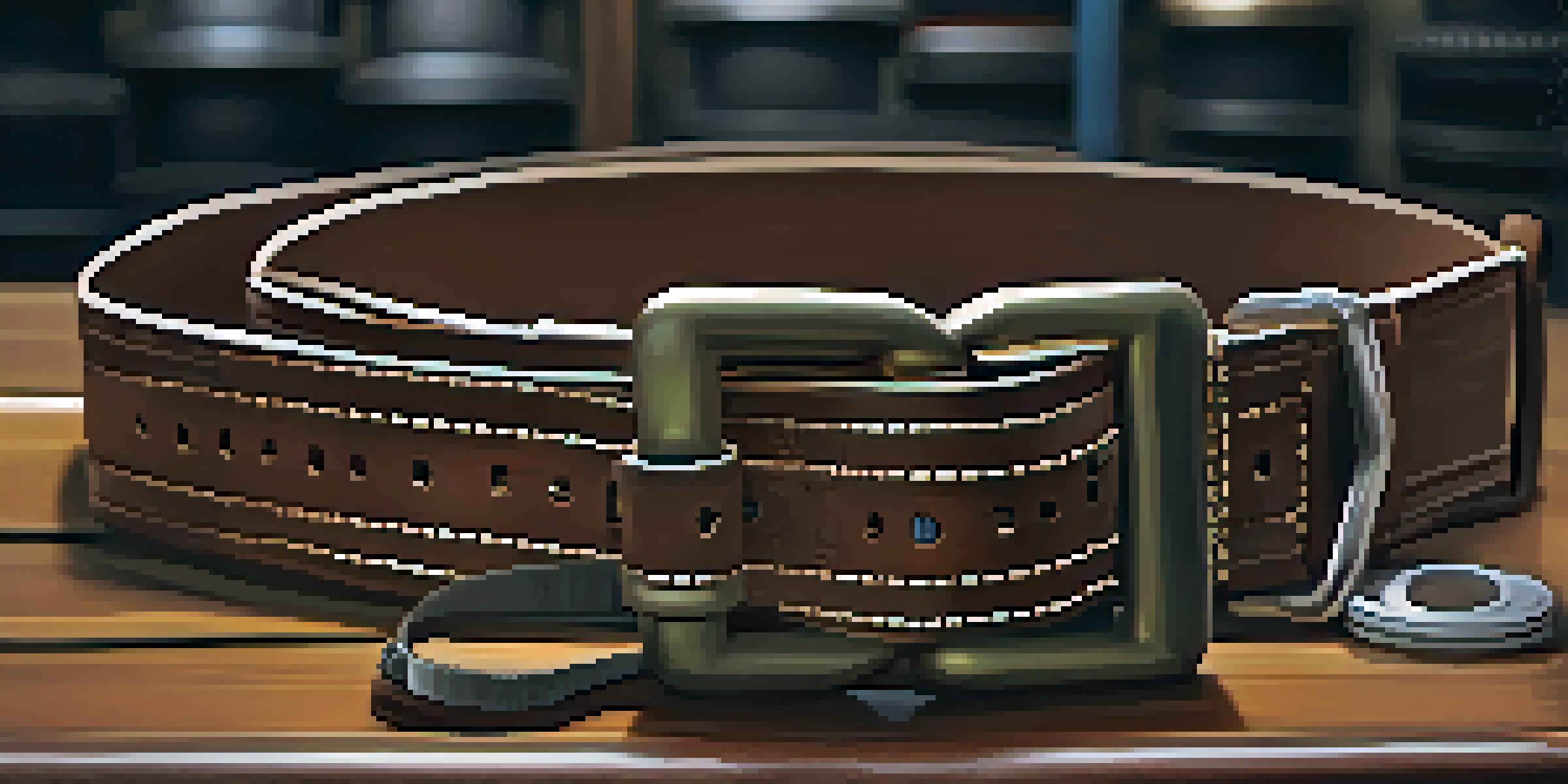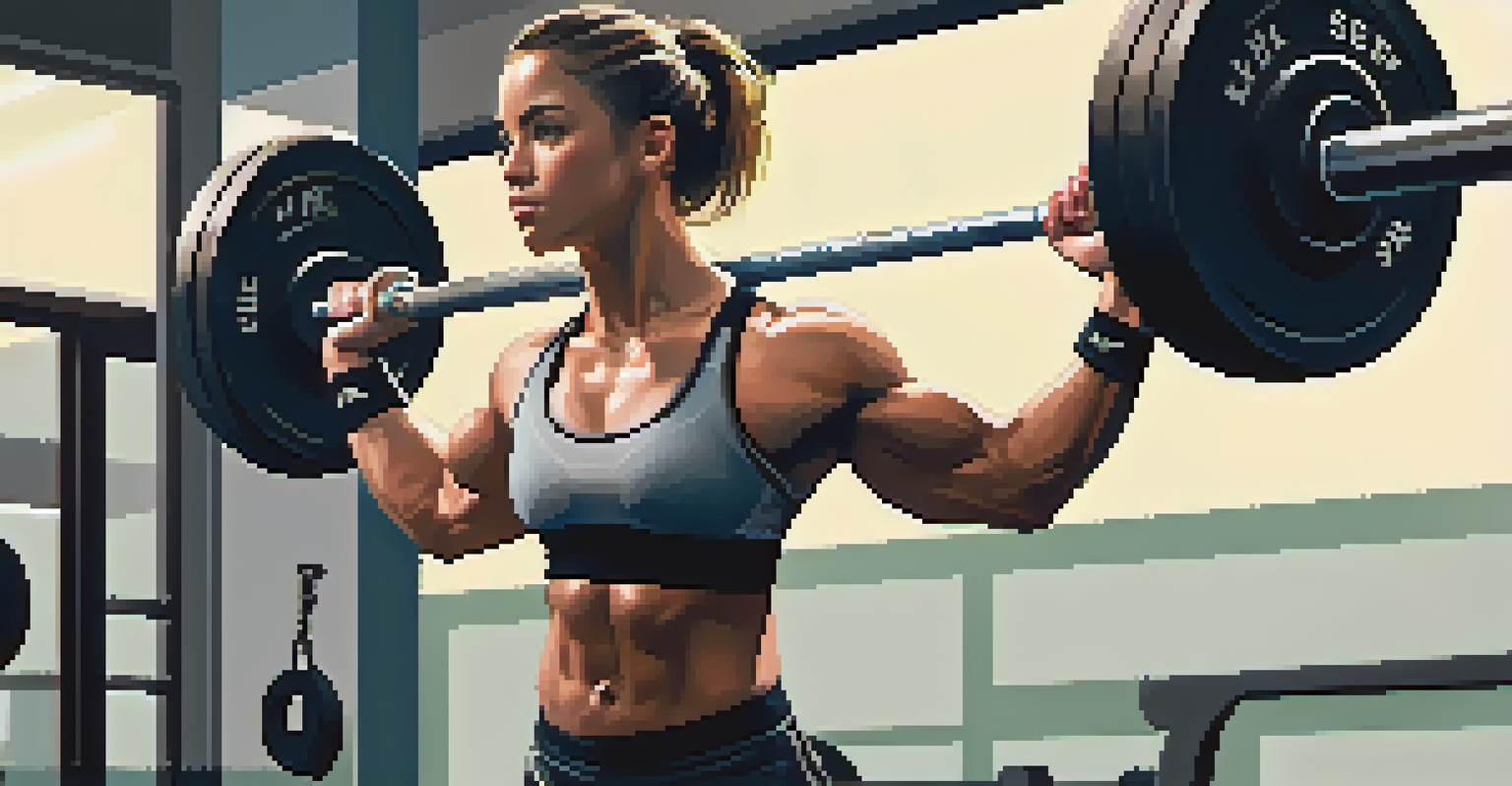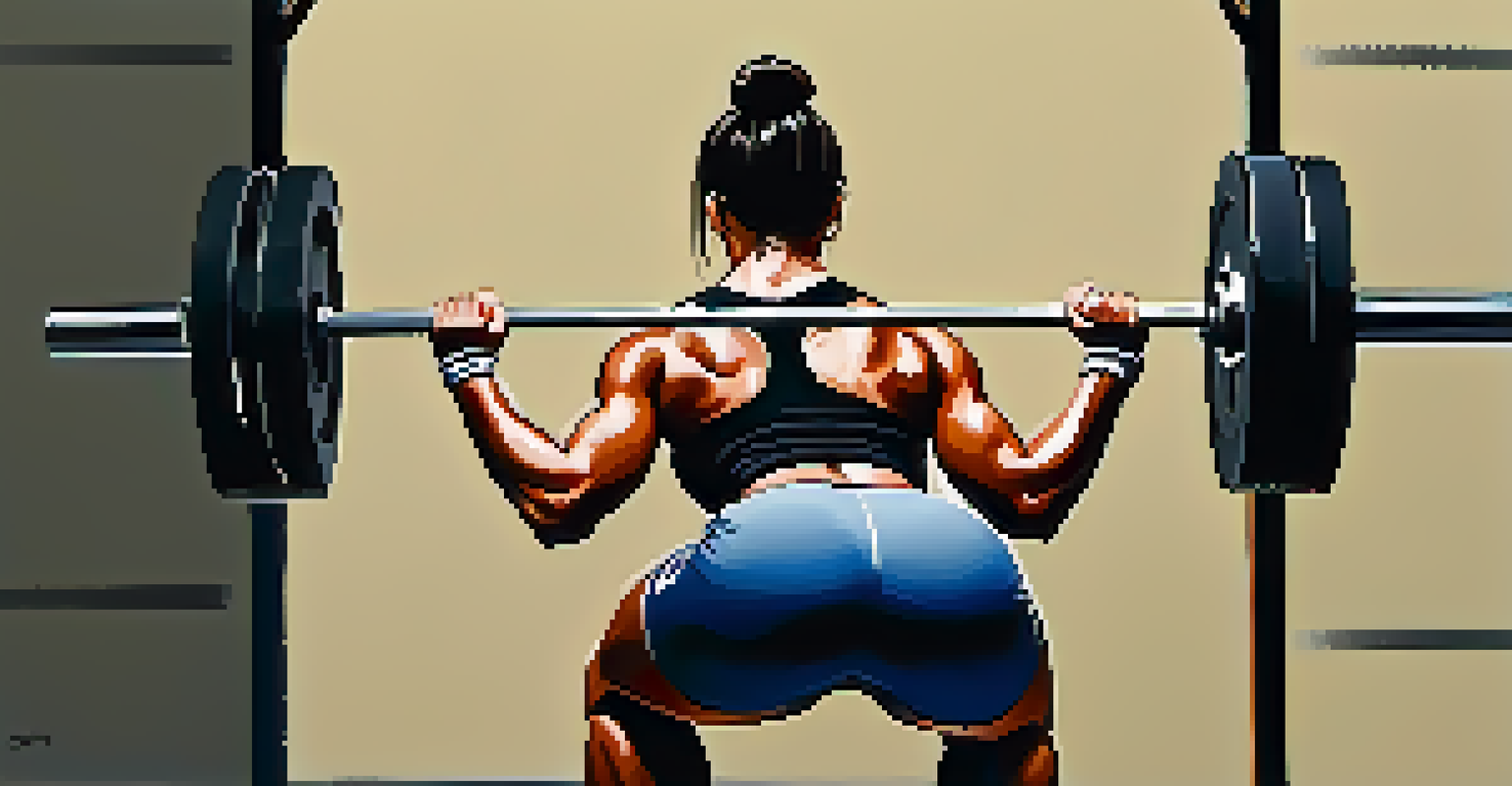Powerlifting Belts: When and How to Use Them Effectively

Understanding Powerlifting Belts and Their Purpose
Powerlifting belts are essential tools for strength athletes, designed to support the core during heavy lifts. They help stabilize the spine and increase intra-abdominal pressure, which is crucial for maintaining proper form and preventing injury. Think of the belt as a supportive hug around your waist, providing a solid foundation for your lifts.
Strength does not come from physical capacity. It comes from an indomitable will.
When lifting heavy weights, your body needs all the support it can get. A well-fitted powerlifting belt acts like a brace, allowing you to generate more force and lift heavier. This added stability can make a significant difference, especially in compound movements like squats and deadlifts.
It's important to note that while belts can enhance performance, they shouldn't be a crutch. Building core strength through various exercises is still vital for overall stability and safety. A belt should complement your training, not replace the need for a strong core.
When to Use a Powerlifting Belt for Maximum Benefit
Knowing when to strap on your powerlifting belt is crucial for getting the most out of it. Typically, belts are recommended for heavier lifts, usually around 80% of your one-rep max (1RM), as this is when extra support can be most beneficial. If you're lifting lighter weights, it's often better to train without a belt to build core strength.

For beginners, it might be tempting to use a belt from the start, but it's wise to first develop proper lifting techniques. Once you feel comfortable with your form and start progressing to heavier weights, that's the right time to consider incorporating a belt. Your body should be able to handle the load without one before relying on the added support.
Powerlifting Belts Enhance Stability
Powerlifting belts provide essential support for the core, stabilizing the spine and allowing for heavier lifts.
In competitions, belts are almost a necessity, as the pressures of performing can lead to form breakdown. Wearing a belt during training sessions that simulate competition conditions can help you get accustomed to its feel and make it a seamless part of your lifting routine.
Choosing the Right Powerlifting Belt for Your Needs
Selecting a powerlifting belt can be daunting, given the variety of options available. Look for belts that are specifically designed for powerlifting, typically made of thicker leather or heavy-duty nylon. A belt should be around 4 inches wide to provide adequate support without restricting movement.
The difference between a successful person and others is not a lack of strength, not a lack of knowledge, but rather a lack in will.
Adjustability is also an important factor; a belt with a prong or lever system allows for a snug fit, which is essential during lifts. Remember, a belt that's too loose won't provide the necessary support, while one that's too tight can hinder your breathing and performance. Finding the right balance is key.
Lastly, consider the thickness of the belt. Thicker belts are generally preferred for heavy lifting, as they offer more support. However, if you're new to using a belt, starting with a thinner model can help you ease into the practice without overwhelming your core.
How to Properly Wear a Powerlifting Belt
Wearing a powerlifting belt correctly is just as important as choosing the right one. Position the belt around your waist, ensuring it sits just above your hip bones and below your rib cage. This placement allows it to support your abdomen effectively while still allowing for natural movement.
Make sure the belt is snug but not overly tight. You should be able to take a deep breath and brace your core without feeling restricted. A good rule of thumb is to adjust the belt so that you can fit a couple of fingers between it and your body when you're at rest.
Use Belts Strategically for Gains
To maximize the benefits of a powerlifting belt, use it during heavy lifts while ensuring core strength is developed without reliance on the belt.
Before lifting, practice engaging your core by pushing your stomach against the belt. This technique helps increase intra-abdominal pressure, providing the support you need during heavy lifts. Proper engagement is crucial for maximizing the benefits of the belt and maintaining stability.
Common Mistakes When Using Powerlifting Belts
Even seasoned lifters can make mistakes when using powerlifting belts. One common error is relying too heavily on the belt, which can weaken the core muscles over time. It's essential to continue training your core and not use the belt as a crutch during every lift.
Another mistake is wearing the belt too loosely or tightly. A belt that's too loose won't provide adequate support, while one that's too tight can restrict your breathing and affect your performance. Finding that sweet spot is crucial for getting the most out of your lifts.
Lastly, some lifters forget to properly brace their core when lifting with a belt. Simply wearing the belt isn't enough; you need to actively engage your core to gain its full benefits. Practicing proper bracing techniques will enhance your stability and strength during lifts.
Integrating Powerlifting Belts into Your Training Regimen
Incorporating a powerlifting belt into your training can be a game-changer, but it's essential to do so strategically. Start by using the belt during your heaviest sets of compound lifts, such as squats and deadlifts, while performing lighter accessory work without it. This approach helps you build strength and stability without becoming overly reliant on the belt.
As you become more comfortable with the belt, you can gradually increase its usage across your training sessions. This could involve wearing it during your working sets or even during specific accessory exercises that require more core stability. Just remember to listen to your body and adjust as needed.
Proper Technique Prevents Injuries
While powerlifting belts aid in injury prevention, they should be combined with proper lifting techniques and core strength to ensure safety.
It's also beneficial to have a plan for when you'll use the belt throughout your training cycle. For example, you might choose to wear it more frequently during peak weeks leading up to a competition while dialing back during lighter training phases. This strategy keeps your core engaged and ready for the demands of competition.
The Role of Powerlifting Belts in Injury Prevention
One of the primary benefits of using a powerlifting belt is its role in injury prevention. By providing extra support to your spine and core, a belt can help reduce the risk of injuries when lifting heavy weights. It acts as a safety mechanism, ensuring that your body maintains proper alignment during strenuous lifts.
However, it’s essential to understand that a belt is not a guarantee against injury. While it can provide support, proper technique and a strong core are equally important in preventing injuries. Relying solely on a belt can lead to muscle imbalances and potential issues down the line.

To maximize the injury-prevention benefits of a powerlifting belt, be sure to combine its use with a well-rounded training program. Incorporate exercises that strengthen your core and improve your overall stability. This comprehensive approach will help keep you safe and strong while pursuing your lifting goals.